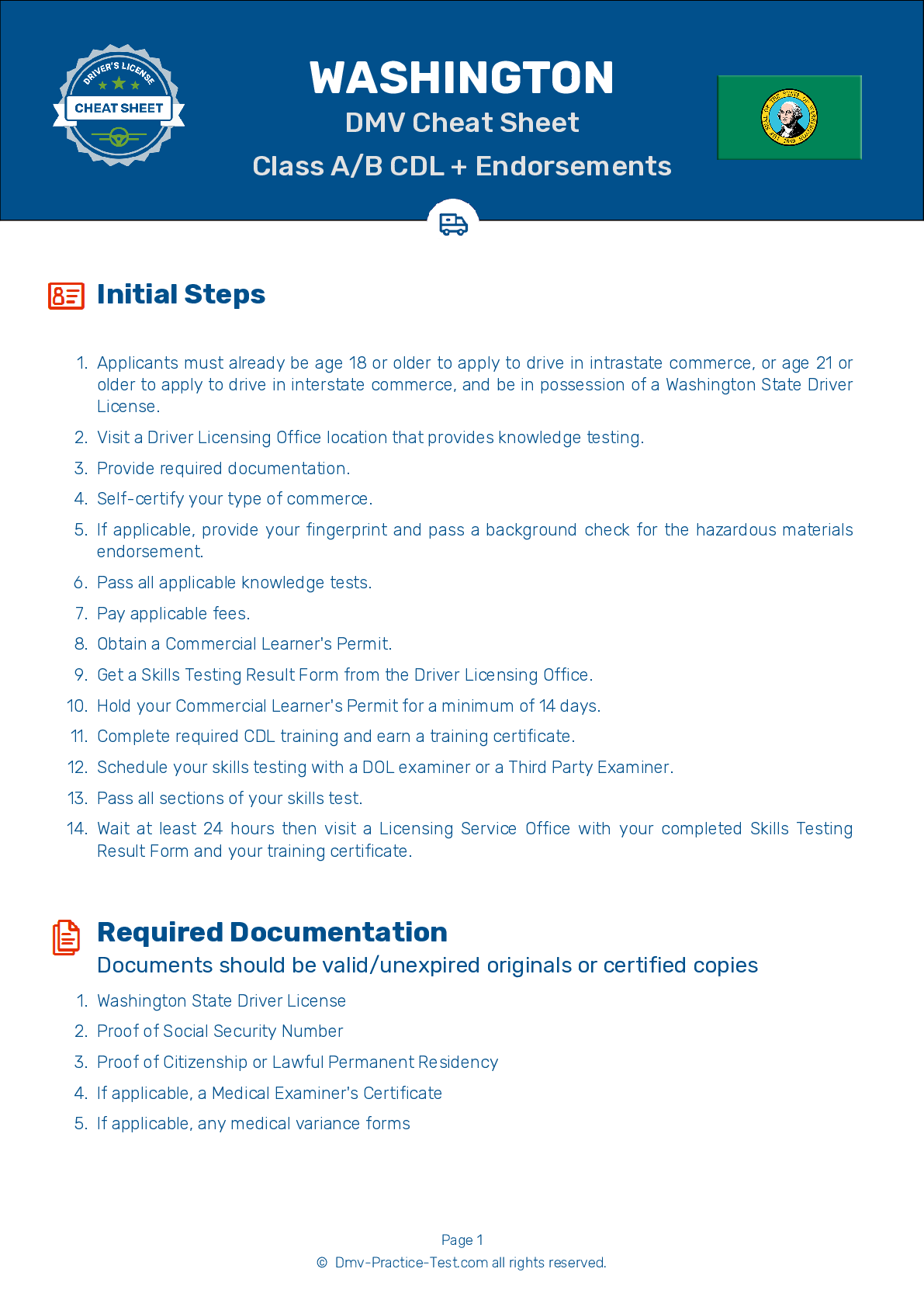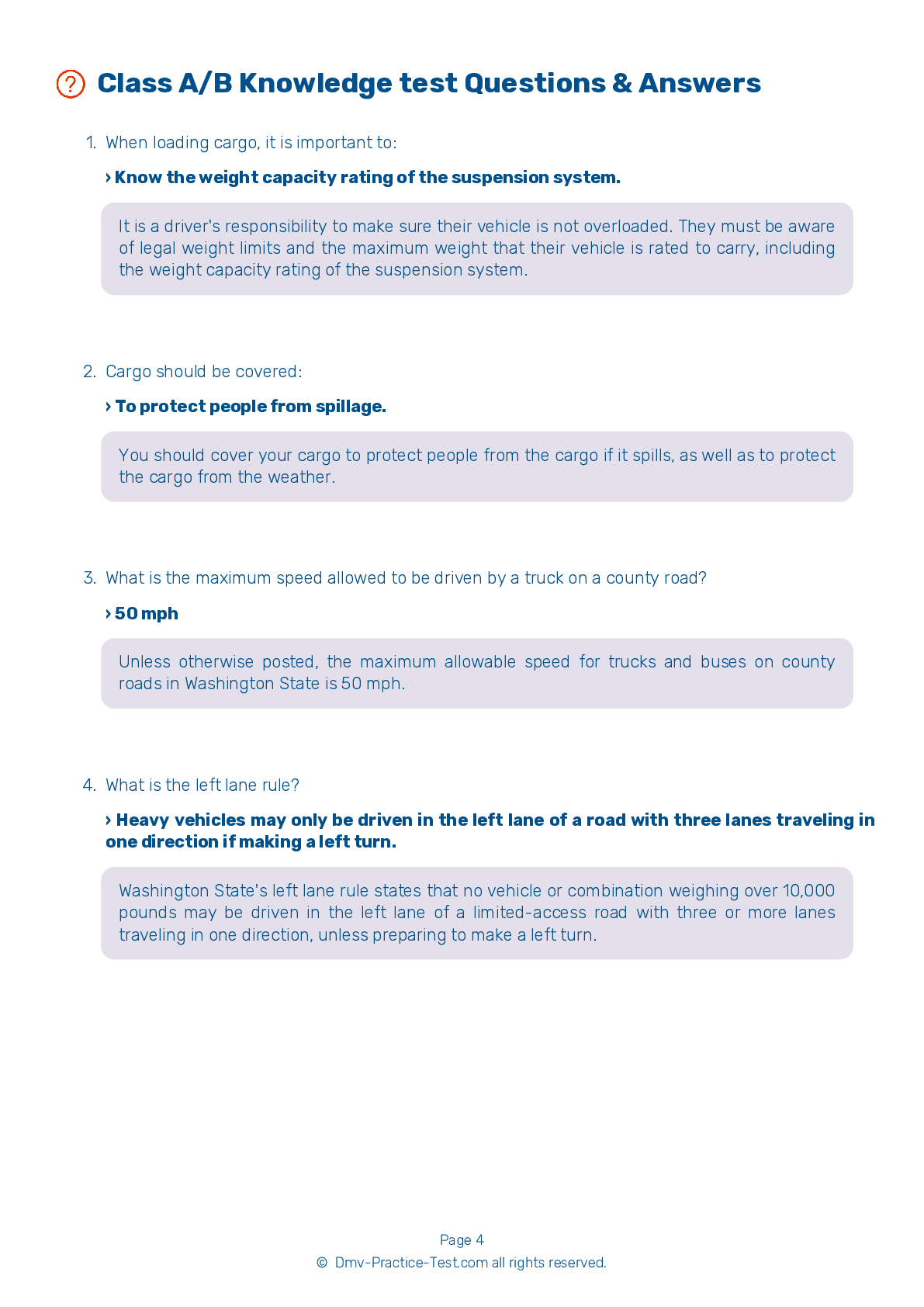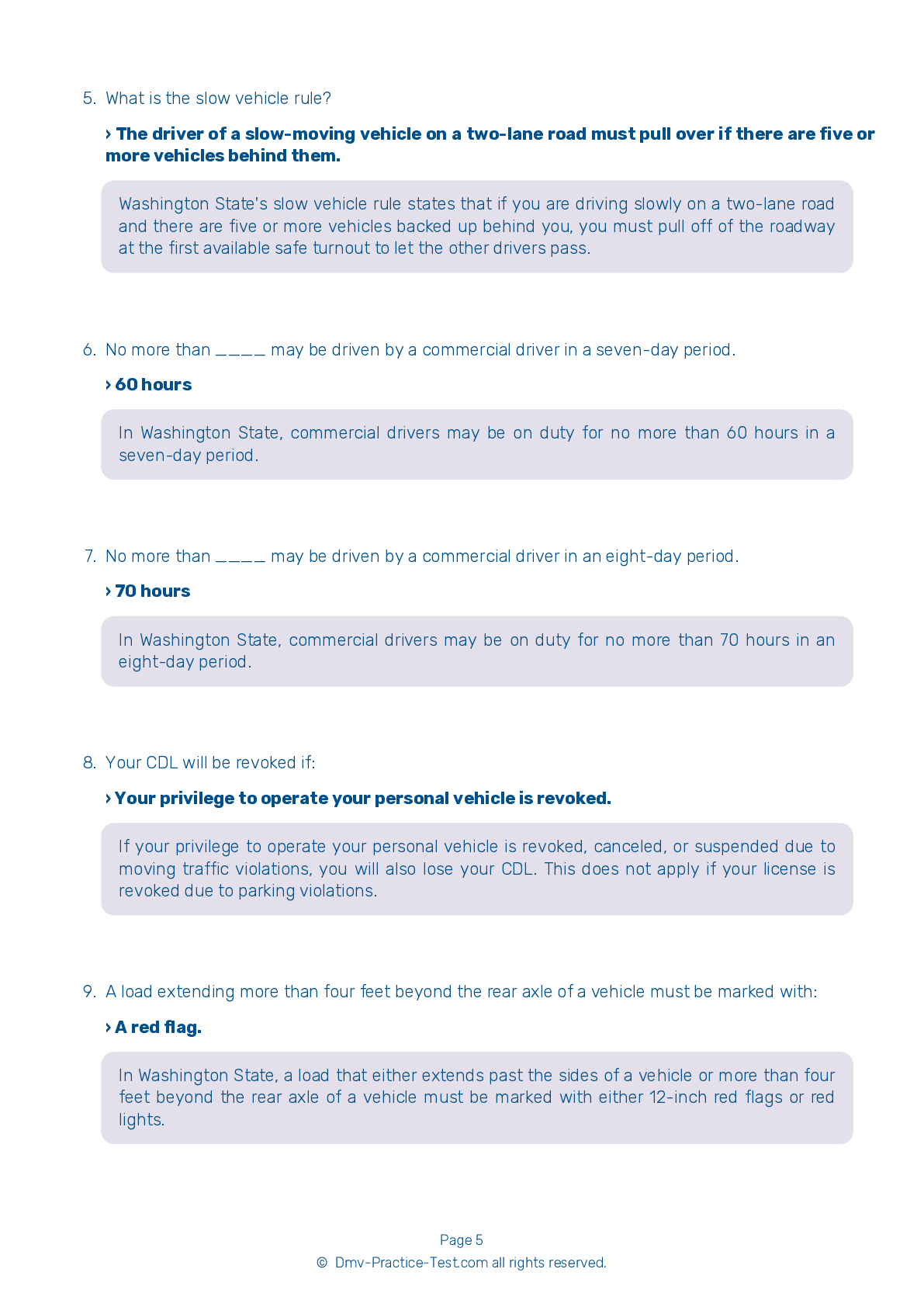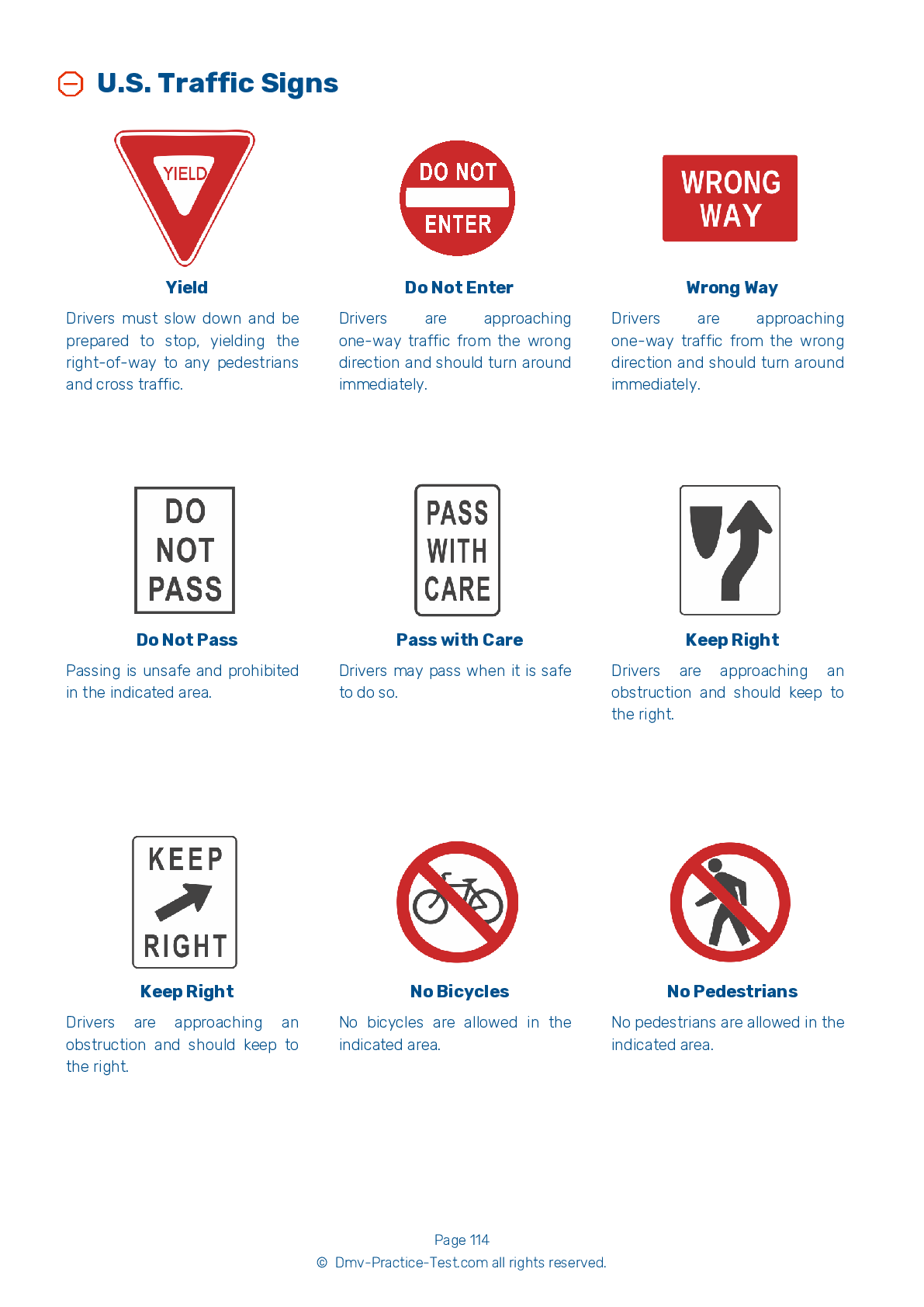Double #2
Double Triple Test | Washington 2025 #2
Train for FREE with our Washington CDL double triple practice test online. The official exam test consists of several obligatory parts, with all of them checking your knowledge of different blocks of road rules. If you need to obtain a WA CDL double triple license in 2025, practice as much as possible. Free sample tests published on our website will help you check and improve your knowledge and boost your grades. Please bear in mind that DMV requirements may vary from state to state.
20
16
20
1 . A broken exhaust system:
A broken exhaust system can let poisonous fumes into a vehicle's cab or sleeper berth. Be sure to inspect your exhaust system for any loose, broken, or missing parts.
2 . Regrooved tires are:
Regrooved, recapped, or retreaded tires are not permitted to be used on the front of a bus.
3 . When backing with a trailer, turning toward the driver’s side is encouraged because:
When driving in reverse, it is always recommended that a driver backs their vehicle toward its left side. This will allow the driver the best possible view of the rear of their vehicle.
4 . Regrooved tires:
Regrooved, recapped, or retreaded tires are prohibited on the front wheels of a bus.
5 . Older trailers are not equipped with spring brakes. This means that if the air supply for a vehicle's air braking system leaks away:
Older trailers do not have spring brakes. This means that if the air supply in an older trailer's air tank has leaked away, there will be no working brakes connected to the trailer and its wheels will turn freely.
6 . A dual air brake system:
A dual air brake system is made up of two separate air brake systems. The systems share a single set of brake controls, but each has its own air tanks, hoses, and lines. One system typically operates the regular brakes on the rear axle or axles while the other system operates the regular brakes on the front axle.
7 . A low air pressure warning signal should activate:
In an air brake system, a low air pressure warning signal must come on if air pressure in the tanks falls below 60 psi. This warning signal may come in the form of a light, a buzzer, or a wig wag.
2025 Washington | Frequently Asked Questions
To acquire a CDL Hazmat endorsement in Washington, you must have a valid CDL. Next, pass the Hazardous Materials Endorsement Knowledge Test at a Washington State driver licensing office. Then, undergo a federal background check and fingerprinting at an approved location. Finally, after receiving clearance, visit a driver licensing office to add the endorsement to your CDL.
To obtain a CDL Hazmat license, you must first have a valid Commercial Driver's License (CDL). You also need to pass the Hazardous Materials Endorsement Knowledge Test. A federal background check and fingerprinting are also required. Additionally, you must be at least 21 years old and a U.S. citizen or have legal status in the U.S.
When applying for a CDL Hazmat endorsement, you'll need your current Commercial Driver's License (CDL), proof of U.S. citizenship or lawful permanent residency (like a birth certificate or green card), and a completed Medical Examination Report Form. Also, you'll need proof of your Social Security number and a completed Hazardous Materials Endorsement application.
Yes, there is a dedicated written test for the CDL Hazmat endorsement. This is known as the Hazardous Materials Endorsement Knowledge Test. It covers topics like loading and unloading hazardous materials, bulk packaging marking, driving and parking rules, and emergency response procedures. You must pass this test to get the Hazmat endorsement.
The Hazardous Materials Endorsement Knowledge Test for the CDL Hazmat endorsement covers a range of subjects including identification of hazardous materials, proper loading and unloading procedures, safety procedures in transport, emergency response procedures, and understanding of the Hazardous Materials Regulations. It also tests knowledge of placarding and marking requirements.
Yes, there are extra charges associated with obtaining a CDL Hazmat endorsement. These include fees for the written test, fingerprinting, and a background check. The exact costs can vary by state and the specific services used for fingerprinting and background checks. It's best to check with your local DMV for the most accurate information.
Yes, obtaining a CDL Hazmat endorsement does require a background check and security clearance. The Transportation Security Administration (TSA) conducts these checks to ensure that the applicant does not pose a security threat. The process includes fingerprinting, a review of criminal history, and immigration status check for non-U.S. citizens.
Yes, specialized training is mandatory for the CDL Hazmat endorsement. Applicants must pass the Hazardous Materials Endorsement Knowledge Test. Additionally, they must undergo a TSA background check. While not a formal "certification," these steps are necessary to ensure the driver understands how to safely handle hazardous materials.
No, you cannot legally transport hazardous materials without a valid Commercial Driver's License (CDL) with a Hazardous Materials (Hazmat) endorsement. This endorsement ensures that drivers have the necessary training and knowledge to handle hazardous materials safely and in compliance with the law. Violating this can result in hefty fines and penalties.
You can add the CDL Hazmat endorsement to your current CDL license. It doesn't require a new application for a CDL license. However, you will need to fill out a separate application for the endorsement, pass the Hazmat knowledge test, and complete a TSA background check before the endorsement is added to your existing CDL.



